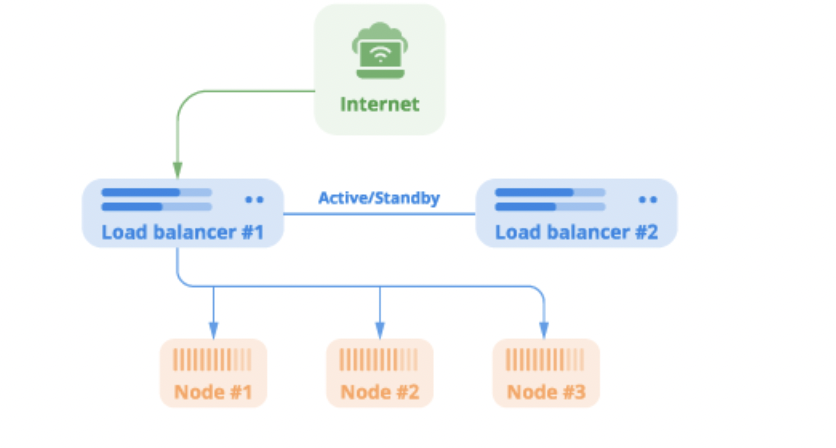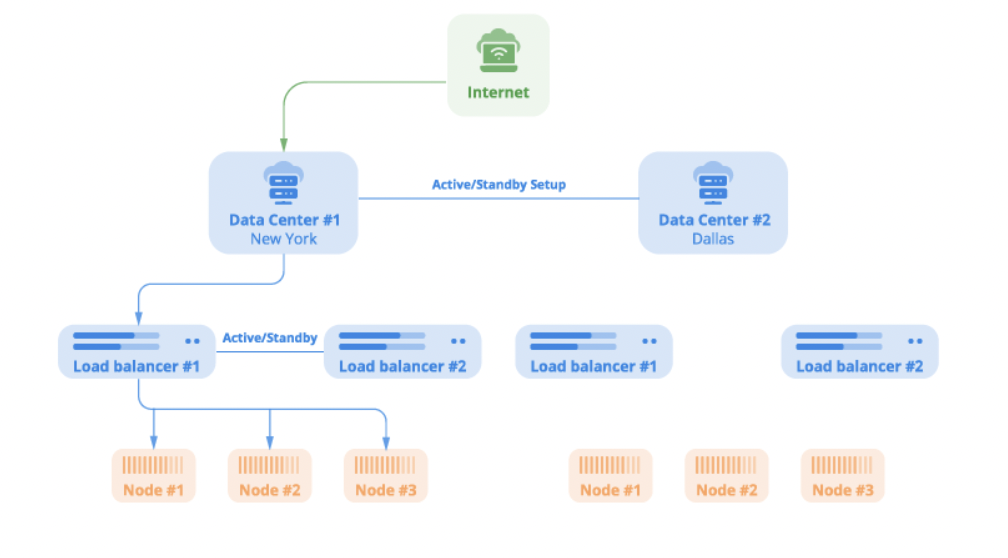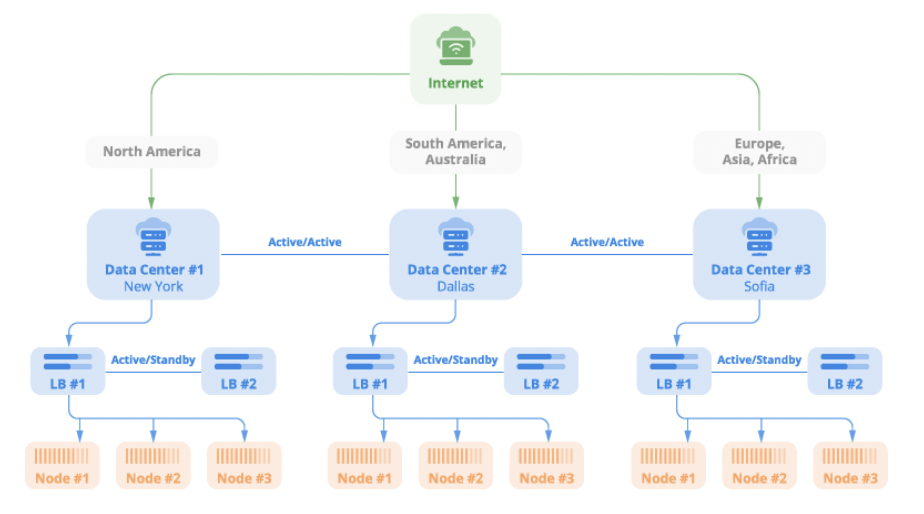5 Reasons to Consider Server Clusters

5 Reasons to Consider Server Clusters
As companies grow and scale, website and data management can become more complex — especially when multiple websites are involved. Many businesses are making the switch to multi-clustering hosting to keep their websites reliable and secure.
There are more than a few reasons why you may need to host multiple websites. Big enterprises oversee many different subsidiaries and projects around the world, growing businesses open new opportunities for wider audiences, and web developers juggle with numerous clients on a long-term basis.
So what are you supposed to do if you have more than one online project at hand? Should you keep websites on the same server or utilize different machines for each one?
Here's what you need to know...
The State of Online Business Today
Practically everyone is online nowadays in some form or another, and businesses have quickly recognized the opportunities.
Many companies have completely switched to the online environment, while others have simply diversified their services. Whatever the reasons - the numbers speak for themselves:
- Over 64% of all small-to-medium businesses (SMBs) have at least one website or a blog.
- Big e-commerce stores are projected to grow their business by 50% in the next three years.
- Nasdaq calculates that by 2040 online commerce will account for around 95% of all sales.
- COVID-19 saw retail sales drop by 3.9%. At the same time, online sales thrived with a 14.8% increase.
- The B2B industry is estimated at a whopping $3.7 trillion in the US alone.
- The top selling points for B2B customers are brand reputation (53%), price (47%), and client loyalty (43%).
The last stat is very revealing in the sense that in order to grow big - you have to impress your users long-term. While this may sound easy and logical, there are many obstacles along the way.
Looking for an IT services provider? We've got you — connect with your ideal company on The Manifest.
Hosting Risks and IT Threats for Online Business Owners
You don't have to be a well-known enterprise or a lucrative e-commerce business to attract unwanted attention. Of course, being one will significantly increase the chances of becoming a target of a web attack.
When they have a challenge, hackers can become pretty inventive. Large-scale DDoS attacks, undetectable malware, or even account breaches through phishing - the ways to bring a server down are more than a few. Every successful business owner knows well that even a second of downtime can lead to devastating financial results.
Many people are drawn to the glamorous side of owning a multi-million dollar enterprise, but no one tells you how that possible issues grow exponentially with size.
The risks of working with third-party platforms, data protection laws, and security regulations are all essential things to watch out for, demanding not only extra workforce but financial investments as well. And if you decide to keep multiple projects, each on its own servers, the monthly hosting costs can skyrocket.
So what can the industry offer us if we need a reliable yet scalable solution for bigger projects and high-traffic websites? In recent years, the multi-clustering model seems like a growing crowd favorite.
What is the Multi-Clustering Model?
The multi-cluster hosting model employs multiple servers (nodes). The different nodes are grouped together in server clusters that act independently and ensure maximum availability and performance, even if there is a problem with one of them.
Your servers can be configured to serve various purposes - load balancing, website file management, database operations, or backup storage, to name a few.
The multi-clustering model lets you benefit from ultimate redundancy and distributed storage powered by a high-speed network, sometimes involving multiple data centers.
The environment also helps you boost your website performance by an average of 20-50%, thanks to the inherent caching mechanisms and load balancing.
Searching for the most suitable clustered hosting model, you can stumble upon three main types of plans.
3 Types of Cluster Plans
The easiest way to identify the different cluster models is by their server architecture.
Here are 3 types of cluster plans:
The options vary in terms of the cluster status, number of data centers, and server nodes involved.
1. Single Datacenter Cluster
In this model, you have a few interconnected servers in a single data center. The setup includes at least two load balancers, while the rest of the nodes can contain all your needed data.

Source: ScalaHosting
The second load balancer is in a standby state and only takes over if the first one fails, ensuring the website uptime remains uninterrupted.
2. Multi-Datacenter Cluster
You can now employ multiple data centers in completely different parts of the world.

Source: ScalaHosting
You have matching clusters in each data center, so if it goes down - the other one immediately takes over your operations. There are at least 10 different cluster nodes, which guarantees your flexible storage distribution and service automation.
3. Multi-Region Cluster
Ultra-high-traffic websites and international corporations often need the best possible performance and redundancy on a geo level.
That's why they not only employ different data centers, but all of them are active at all times. Failures of a node or even an entire DC facility will lead to no downtimes as the other clusters are still in operation.

Source: ScalaHosting
Whichever the plan, you can alter the cluster configuration according to the project needs, add/remove resources, and change server node functionalities.
5 Benefits of Server Clusters
Switching to a clustered web hosting plan is a no-brainer for a growing number of big enterprises.
Here's why:
- Diverse infrastructure: Putting all eggs in one basket is never a good idea, especially if you run a multi-million dollar business. Even if you employ your own secure facility, can you really make it 100% fail-proof? By spreading your servers across multiple locations, you can ensure that no single point-of-break can damage your connectivity or site performance.
- No downtimes: Hacking attacks, power outages, natural disasters - there are numerous extremities that might lead to downtimes. But if your project relies on a multi-datacenter or multi-region model, any single outage, even on the DC level, will make no negative impact. There is at least one backup node available exactly for such cases, ready to take over if your main server(s) go offline.
- Efficient resource allocation: There is no easier way to accommodate a dynamically growing online project. The clustered model allows you to customize your server from the get-go fully but also add any needed server resource (RAM, CPU, disk space) as the need arises. The system monitors your consumption and will alert you way before you hit any of the limits.
- Better security: Fully securing an online project is a joint responsibility of both the client and the hosting provider. It's a multifaceted process that starts from your infrastructure. The clustered environment is well-suited for both mission-critical projects and as a tailored solution for multisite businesses. With the right setup, you can guard yourself against DDoS attacks, malware, spam, and all kinds of malicious behavior. As you're not relying on a single physical server, even if a hacker manages to breach one, they will remain "caged" and cannot interfere with the rest of your project.
- Professional management: Not every enterprise can afford to keep a dedicated IT team and administrators on site, so shifting this responsibility to a crew of trained professionals is the next best thing. Managed clustered hosting plans allow you to keep focus on your business while your host's support takes care of all technical aspects - system configuration, monitoring, maintenance, hardware replacement, and many more.
Clustering Models Offer Next-level Availability and Scalability
So, what would be the best approach to host multiple websites - all on one server or each on a different one?
The answer strongly depends on the size of your operations. If your websites or apps are relatively small and not mission-critical - you can safely put them on a VPS hosting plan and steadily scale them until they start outgrowing the environment.
Once you start playing in the Big League - advanced solutions like the multi-cluster model may be a better fit in terms of stellar performance and security. Many Fortune 500 companies and trendy enterprises are already jumping on the bandwagon, and we can easily see why.
Find top IT companies on the Manifest.